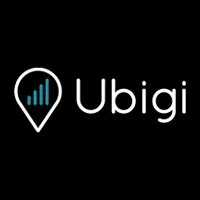"Our goal is to triple product development within a year" - Transatel's CEO on how AI is powering Ubigi’s next phase of innovation
Find out what else Ubigi is working on and where it’s headed next

Ubigi has been trying to quietly shape the eSIM landscape since its launch in 2017, and has built a growing reputation thanks to its 5G connectivity spreading to over 60 countries, and partnerships with automotive giants like MINI.
To find out more, I spoke with Jacques Bonifay, CEO and Co-Founder of Ubigi's parent company Transatel about its ability to adapt to a rapidly evolving industry.
As one of the few full MVNOs in the market, Ubigi stands out for its direct network support and control, giving it a unique advantage over other eSIM contenders.
"This level of control also enables us to partner directly with OEMs like Apple. Ubigi is now integrated into iPad eSIM settings," Bonifay shares.
When it comes to security suites (something that many eSIMs for international travel, like Saily, have introduced), Ubigi wants to keep pace with its own innovations. Bonifay adds that the brand has recently launched a new feature allowing users to switch their IP address back to their home location without needing a separate VPN service.
Moreover, Ubigi uses packet gateways to provide consistent network services abroad.
“By routing traffic through gateways that are closer to where users actually are, Ubigi significantly reduces latency and ensures faster, more reliable connectivity,” Bonifay explains.
Sign up to the TechRadar Pro newsletter to get all the top news, opinion, features and guidance your business needs to succeed!
These packet gateways essentially act as localized data routes, helping optimize connection speed and stability no matter where users travel.
Looking ahead, Bonifay says AI is playing a transformative role in how Ubigi develops products and serves customers.
"We use AI across the lifecycle—turning early designs into interactive prototypes for stakeholder testing, automating repetitive development tasks, and even building features from scratch", he explains.
Read further for our full conversation, as Bonifay reveals what’s next for Ubigi and how the brand plans to stay ahead in the evolving eSIM market.
- Ubigi was an early mover in the eSIM space. What does leadership look like now in a market that is rapidly crowding with competitors? How do you future-proof innovation in such a fast-evolving ecosystem?
Ubigi’s leadership began with our pioneering launch in 2017, but staying ahead today is about more than being first. As a full MVNO, unlike most eSIM resellers in the space, we fully own the user journey, giving us the ability to innovate end-to-end, from network access to the customer experience.
The Ubigi app enables users to top up anytime and anywhere, even without remaining data or WiFi access.
Another example is a feature we introduced earlier this year that allows users to choose their preferred IP address location—and seamlessly switch between a destination IP and their home country IP, without the need for any VPN installation. We’re now progressively rolling out this feature to additional markets.
This level of control also enables us to partner directly with OEMs like Apple. Ubigi is now integrated into iPad eSIM settings, and we’re working to make smartphone eSIM activation even more seamless, eliminating the need for QR codes.
We deliver a consistent, high-quality experience across smartphones, laptops, and connected cars in over 200 destinations through strong local carrier relationships.
Backed by Transatel’s 20+ years of telecom innovation and the global strength of the NTT Group, we’re also actively shaping the future of connectivity, where eSIM and satellite technologies will soon converge.
- How do you ensure a consistent user experience when the quality of local infrastructure varies so wildly?
Consistency starts with strategic partnerships. Ubigi negotiates directly with hundreds of local carriers to secure access to the best available networks in each country—often with multi-operator coverage to maximize reliability.
We’re also one of the few providers to offer 5G speeds in over 60 destinations – sometimes, through several operators, ensuring top-tier performance where available.
Ubigi is expanding its infrastructure by opening new packet gateways (P-GWs) in multiple geographic locations. By routing traffic through gateways that are closer to where users actually are, Ubigi significantly reduces latency and ensures faster, more reliable connectivity. This localized approach not only improves performance for everyday browsing but is especially valuable for bandwidth-intensive and real-time applications such as video calls, streaming, and mobile gaming.
We’re transparent about the networks we use, and customers can check coverage details before purchase. Because we have formal service agreements - not just resale deals - we can directly engage with operators to resolve any issues our users may face, helping us maintain a higher standard of service and responsiveness worldwide.
- What surprising trends have you seen in how consumers use eSIMs today versus two years ago?
We’ve seen the rise of multi-device connectivity (including laptops and connected cars), not just smartphones.
What’s more, we’re seeing a growing segment of heavy data users shifting toward our unlimited data plans, particularly among digital nomads, remote workers, and frequent travelers who rely on high-speed, uninterrupted connectivity for work and entertainment.
eSIM has evolved beyond a travel tool to become a daily connectivity solution for a global, always-on lifestyle. For example, when a local mobile operator experiences an outage, we often see a surge in usage as users rely on Ubigi to stay connected via multiple networks.
- What role do OEM partnerships (like your tie-up with Stellantis for connected cars) play in Ubigi’s business model today, and will we see similar collaborations in consumer tech soon?
Collaborations with Stellantis, BMW, Toyota, and integrations like Ubigi in iPad eSIM settings allow us to embed our connectivity services directly into devices. This aligns with our goal of providing a unified experience, where a single Ubigi account can manage multiple eSIMs across devices.
- With the eSIM market exploding, how do you scale without losing agility? Has Ubigi made any key internal changes to support this next phase of growth?
Yes, the market is growing rapidly, and Ubigi has consistently achieved an average of triple-digit growth year over year. We are continuously recruiting to support innovation and amplify our global presence, while also exploring AI and other tools to automate processes, streamline operations, and boost productivity.
We take a sustainable, long-term view, focusing on profitability and enduring value rather than short-term gains.
In a rapidly expanding market, it’s not just about who grows the fastest; it’s about who stays. And with our solid foundation, we are building for the long run.
- Are there plans for Ubigi to leverage AI? And if so, will we see it in network optimization, pricing models, customer experience, or something else?
AI is absolutely on our radar and increasingly at the core of what we do. We actively encourage all departments to harness AI to boost productivity and efficiency. As a result, we’re progressively integrating AI across multiple functions: product, fraud detection, customer experience, and more.
From a security perspective, we’re working closely with NTT Data and other key industry stakeholders to implement AI systems that future-proof all layers of our infrastructure. Being a full MVNO with hands-on expertise allows us to be especially nimble and proactive in this area.
Our goal is ambitious: to triple product developments within a year and achieve tenfold acceleration within two. We use AI across the lifecycle—turning early designs into interactive prototypes for stakeholder testing, automating repetitive development tasks, and even building features from scratch. This frees engineers to focus on design and business value, with applications ranging from library selection and code optimization to translations and chatbots.
AI also strengthens software quality through expanded automated testing and log analysis, cutting QA effort while boosting coverage. As AI reshapes workflows, our engineers—who until now have relied on AI to support production—will increasingly need to help AI produce. This means knowing when not to use AI, and mastering and validating what AI delivers, ensuring innovation is matched with critical oversight.
At the end of 2024, we launched an AI-powered chatbot that provides real-time support, making it easier than ever for users to activate, manage, and troubleshoot their connectivity.
Today, AI handles and swiftly resolves over 50% of incoming requests, allowing us to nearly double our support capacity without increasing team size. We plan to progressively integrate additional AI layers to address virtually all customer queries and requests instantly, with the goal of improving the customer experience and making it as seamless as possible.
We’re also finalizing an AI assistant upgrade designed to help users select the most suitable data plan on our e-commerce platform.
- Many eSIM providers struggle with carrier resistance in remote regions. How is Ubigi navigating those hurdles?
Thanks to longstanding relationships with a vast network of carriers, Transatel has built trust that opens doors for Ubigi, even in harder-to-access regions.
In markets where regulatory or technical barriers persist, we’re transparent about limitations while working diligently to expand our footprint.
- What is the long-term vision for Ubigi? How do you plan to differentiate Ubigi in a saturated eSIM market?
Our vision is to become the go-to global platform for secure, flexible mobile connectivity—both for individual users and enterprise clients.
For consumers, Ubigi provides seamless, cross-border connectivity across devices—phones, tablets, laptops, and even connected cars—supporting travel, remote work, and multi-device lifestyles.
For businesses, we provide scalable solutions to manage fleets of connected laptops, tablets, and vehicles. What sets us apart is our deep integration with mobile network operators, our unmatched device compatibility (including smartphones, laptops, and connected cars), and the quality of our service.
We’re not just a travel eSIM; we’re a digital connectivity platform built for the future of mobile and IoT.
- In light of ongoing global economic uncertainty (rising tariffs, inflation, and shifting trade policies), how is Ubigi adapting its strategy to remain competitive and affordable for international travelers and business users?
We adapt by continuously refining our partnerships and pricing strategies to remain competitive, even in the face of global economic shifts.
As a mobile virtual network operator (MVNO) backed by Transatel and as part of NTT Data, we benefit from significant negotiation power with mobile networks around the world.
This helps us get competitive deals and strong service from mobile networks, so our customers enjoy fast, reliable data at fair and clear prices. Our sustainable, long-term approach ensures both international travelers and business users can stay connected affordably, wherever they go.
You might also like
- Unsure of which eSIM to get for Japan? We tested the best eSIMs for Japan
- I visited the headquarters of Nord Security to hear how Saily is reshaping the future of travel tech
- Check out the best eSIMs for Thailand

Udita Choudhary is a Content Sub Editor at TechRadar Pro where she manages several verticals including eSIM, programming and productivity. She also works on the affiliate side, managing the editorial needs of diverse clientele. She has written for publications such as Vogue Business, Marie Claire, and Homes & Gardens.
You must confirm your public display name before commenting
Please logout and then login again, you will then be prompted to enter your display name.
